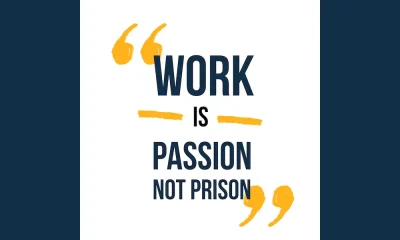Management
The Fundamental Goals of Risk Management

While Kodak once commanded 85% of the camera production market share in 1976, its effects in the market today are borderline negligible. This drop-in glory comes down to one single issue: the business leaders’ failure to have a well-defined risk management program. In a perfect world, they would have accounted for the risk that the rise of digital cameras posed to the existence of their business and looked to capitalize on it.
Your business needs a risk management strategy, but having a plan isn’t always synonymous with success. A great strategy needs to align with your business goals. It should highlight the various aspects of your risk landscape and help you decide how best to mitigate business threats.
The more detailed the strategy, the easier it becomes to fortify your business’s success. All this depends on how well you outline your risk management goals and your effort toward achieving them.
This business blog has more about risk management components and the goals you must commit to.
Elements of Risk Management
Ideally, a robust risk management process comprises three parts: risk analysis and assessment, risk treatment, and monitoring of risk outcomes.
Under risk assessment and analytics, you must determine your business’s risks. You can work with experts or use market research, historical studies, and even brainstorming to identify the chances that you might face.
Once you have a list of your business threats, it should become easy to analyze them. You must form a risk matrix to help tell the magnitude of the different business threats. Not only will this streamline ranking them, but it will also increase the efficiency in using your scarce resources to limit their impact.
Secondly, you will need to pick a risk treatment option. You can avoid the risk, accept it, transfer it to more capable businesses, or even mitigate it. The choice depends on the impact and likelihood of risk occurrence and your business’ capacity to handle the risk.
Lastly, you will need to monitor the outcomes of your risk treatment options. While some choices might not have been the best, your business inclinations towards risk might change with time. On the other hand, it can be possible for new threats to arise as you scale your business. Monitoring your risk management program will help keep your business running despite present and future business threats.
Goals of Risk Management
Role Identification
In project management and daily business operations, everyone must understand their role in keeping their business risk profile healthy. For example, members of the compliance department need to be on their toes to prevent non-compliance business risks.
If you run your business without defining the risk management roles, business-critical operations can be overlooked, quickly resulting in business failure.
Ideally, you should ensure that tasks such as log monitoring, market research, access control, and even compliance have specific employees in charge. The trick lies in fostering an accountability culture to protect your business from the wrath of risk occurrence.
Integrate Strategic Management and Risk Management
A well-thought-out strategic plan is poised for failure as long as you ignore the various risks that come with the plan. For the best results, you need to make strategic plans with the risks involved in mind and an idea of how to tone them down. For instance, the adverse effects of a competitor gunning for your market share should be dealt with quickly.
Ideally, you must establish KPIs to measure the success of your strategic plan and induce consistency in your business’s daily operations. Also, everyone in the organization must know their role in achieving the strategy. When attending to their roles, everyone should consider the risk involved.
Monitoring and Updating the Risk Management Decisions
Nothing is ever set in stone, and your business orientations, risk treatment needs, and the risk landscape are bound to change. In most cases, using your previous risk management strategy today might not be feasible. For instance, using traditional antiviruses might not suffice when dealing with the current threats of file-less attacks.
A complete risk management program should identify any downsides to your current risk treatment decisions and look to change them. You should update your risk management design as soon as you notice any loopholes. As such, your risk management team needs to pay attention to internal and external factors to spot any changes in the risk profile.
Drawing Insights for Decision Making
Your business decisions affect the livelihood of your employees and your entire business, so you can never make them blindly. Every business executive needs to understand the repercussions a decision will have on their business, employees, customers, and investors.
Risk management acts like a microscope for these decisions by pointing out loopholes. The plan should portray the business’s risks and offer these executives options for treating them.
Risk is inevitable when building a business empire, but how you deal with it matters. You need to grasp the depth of a business threat, its potential effect on the business, and how to mitigate it. The more far-reaching you can make your risk management plan, the brighter the future of your business becomes.






